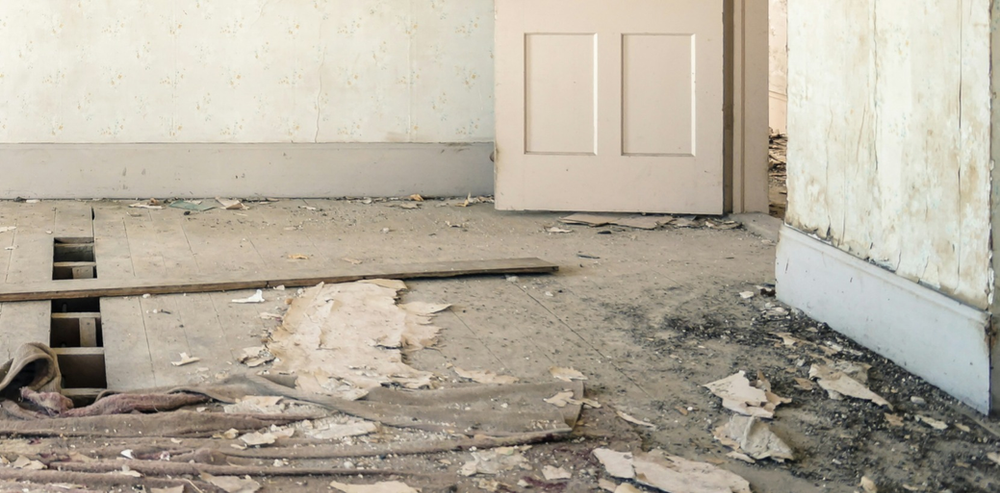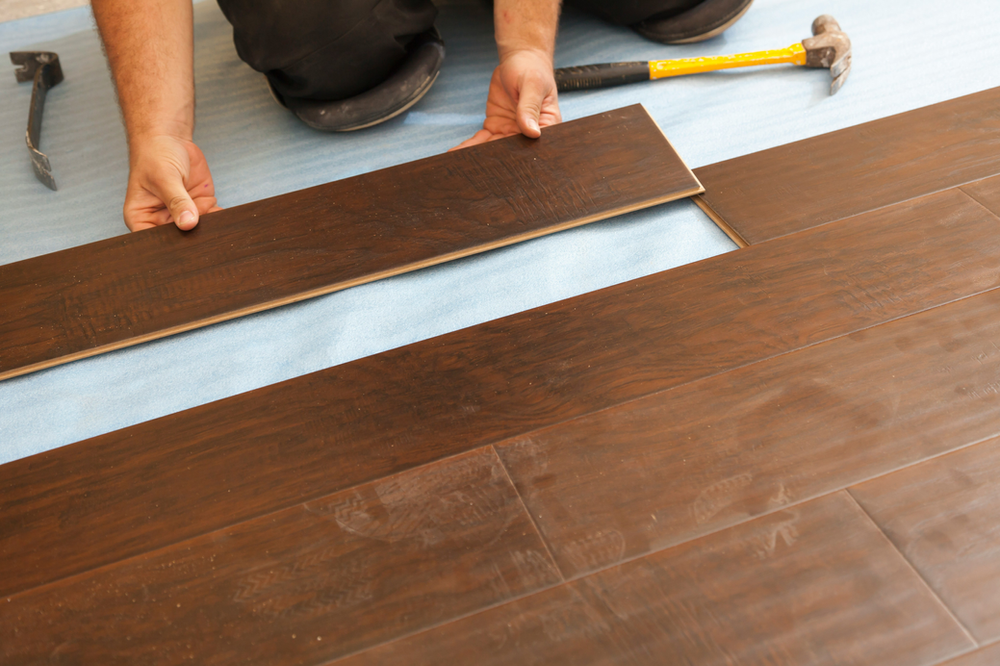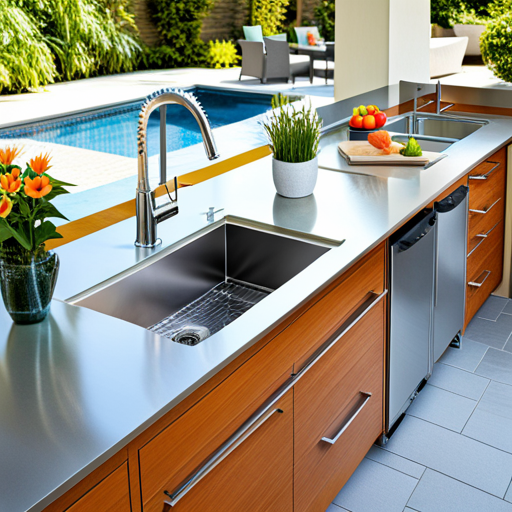Last Updated on June 14, 2024 by John Coleman

Walking around your home should feel smooth, right? But, let’s face it, many homeowners get surprised by that annoying uneven floor sensation. It’s not just a minor inconvenience; it could signal bigger structural issues in your house. In this guide, we’ll dig into why this happens and share practical steps to bring back balance to your space.
Understanding the Issue
Before we can address the solutions, it’s pertinent to understand why an uneven floor isn’t just a minor annoyance. First and foremost, an uneven floor can indicate more serious foundational problems. Left unchecked, these can significantly devalue your property or, in more extreme cases, pose a safety hazard.
Homeowners often report an uneven floor as feeling like a slight incline or decline when walking. In some cases, this may even result in the visible sagging of furniture or areas of separation between the floor and the walls. Recognizing these early signs is crucial, as it allows for timely intervention to prevent the potential domino effect of structural degradation.
Why Your Floor Feels Uneven When You Walk Across It
There are many reasons your floor feels uneven when you walk across it. Uneven floors have a variety of potential causes, each warranting a different approach. Here are the most common reasons behind this imbalance:
Subfloor Issues
The subfloor is made up of wooden panels spanning the floor joists just above your crawlspace and acts as the foundation for the floor covering in your home. When this base is uneven or deteriorates, it can cause the top layer (your floor) to feel uneven or lopsided. Because it’s essentially on the ground, humidity and moisture are a significant issue. Subfloor issues may also stem from poor initial installation, age-related decay, or damage due to moisture or pests.
If you purchase through links on this site, we may earn a small commission. See our affiliate disclosure.
Moisture and Humidity
Excessive moisture or high humidity levels can lead to the expansion of certain materials, like wood, resulting in an irregular floor surface. Wood swells in humid conditions and contracts as it dries out, causing warping or buckling. Moreover, if the subfloor has moisture damage, it could develop rot that makes it prone to bowing or breaking under pressure.
Causes of Moisture and Humidity Affecting the Subfloor

There are various causes of moisture and humidity in a subfloor such as:
Leakages from plumbing, roofs, or gutters
High moisture levels in the crawlspace (the space under your house between the floor and the ground)
Flooding or standing water in the crawlspace or basement
Damaged or improperly installed vapor barrier
Water seeping through the walls of your foundation
Age-Related Settling
The foundation of your home is under constant strain from the weight of the building and shifting soil. Over time, this can lead to foundation settling, either as a global shift or in isolated areas, causing floors to tilt or bow. All homes settle to some extent as they age and materials compress. This natural process can create unevenness, particularly in homes with older construction or those built on unstable soil.
Solutions for Uneven Floors
Depending on the cause, different solutions are appropriate. Here’s how to tackle the problem head-on:
Fixing Moisture and Humidity Issues
Identify and repair any sources of water leakage or damage.
Ensure proper ventilation in the crawlspace by installing fans or vents, if necessary.
Install a vapor barrier to prevent moisture from rising through the subfloor.
Repairing Foundation Problems
Consult with a professional to assess the extent of damage and determine the best course of action.
In cases of minor settling, shims or floor leveling compounds may be used to even out the floors.
For more severe cases, foundation repair methods such as piering, slabjacking, or wall anchors may be necessary.
Addressing Age-Related Settling
Consider hiring a professional to adjust and level the floors using specialized equipment such as jacks or hydraulic pumps.
In some cases, adding support beams or posts may also be necessary to redistribute the weight of the home.
DIY Leveling Techniques
For minor discrepancies, self-leveling compounds or shims can be used to correct the issue. These materials are great for addressing small, localized problems, but they’re not a universal remedy for more severe issues.
Professional Interventions
When faced with significant floor unevenness, it’s best to call in a professional. A foundation repair specialist can assess the situation and utilize advanced techniques such as mudjacking or pier placement to level the area with precision.
Addressing Root Causes
Regardless of the method used to correct the unevenness, it’s vital to address the root cause. If the problem is derived from moisture, foundation issues, or subfloor integrity, these underlying problems must be rectified to ensure a lasting solution.
If you purchase through links on this site, we may earn a small commission. See our affiliate disclosure.
How Much Does It Cost to Level Your Floors?
The cost of leveling your floors will vary depending on the severity and cause of the unevenness, as well as the method chosen to address it. Minor settling issues can typically be resolved with DIY techniques at a relatively low cost, while more severe problems may require professional intervention and come at a higher expense. It’s essential to consult with a specialist to determine the most effective and cost-efficient solution for your specific situation.
DIY Cost Estimates
For minor discrepancies, self-leveling compounds or shims can be purchased at most hardware stores and are relatively inexpensive. Prices can range from $20 to $100 depending on the product and the amount needed. However, keep in mind that if the root cause is not addressed, the problem will likely resurface, resulting in additional time and money spent on repairs.
Professional Cost Estimates
If the unevenness is caused by significant foundation or subfloor issues, professional intervention may be necessary. The cost for these services can vary greatly depending on the complexity of the problem and the method used to correct it. On average, homeowners can expect to pay anywhere from $500 to $10,000 for professional floor-leveling services.
Factors that can impact the cost include the size and scope of the project, the accessibility of the affected area, and any additional repairs or adjustments needed. It’s also essential to get multiple quotes from reputable contractors to ensure you are getting a fair price for the work.
Investing in Long-Term Solutions
While it may be tempting to opt for a quick fix, investing in long-term solutions can save you time and money in the long run. For example, addressing underlying foundation issues or correcting improper subfloor installation can prevent future flooring problems and potentially costly repairs.

It’s also essential to consider the type of flooring material being installed. Some materials, such as tile or hardwood, require a perfectly level surface for proper installation and can be more susceptible to damage from uneven floors. In these cases, investing in professional floor leveling services may be necessary for a successful and long-lasting installation.
Preventive Measures
Once your floor has been leveled, it’s important to take preventive measures to avoid future issues. Here’s what you can do:
Maintenance Tips
Regularly inspect and maintain your floors to avoid the buildup of potential causes. This includes timely repairs of any water leaks, keeping a consistent home humidity level, and ensuring that the subfloor remains in good condition.
Regular Inspections and Upkeep
A proactive approach to home maintenance is your best defense against uneven floors. Schedule routine professional inspections, monitor your home for any structural changes, and promptly address any concerning signs to maintain a stable environment within your home.
Conclusion
Dealing with an uneven floor can be a frustrating experience, but it’s also an opportunity to address potential issues that could have more significant consequences. By understanding the common causes and implementing the right solutions, you can ensure that your home remains a well-balanced and safe haven for years to come. Remember, regular maintenance and early intervention are your allies in the battle against uneven flooring.
For those who have noticed the unsettling sensation of an uneven floor or have concerns about the structural integrity of their home, it’s time to take action. Address these issues with the urgency they deserve and seek professional help if needed. Your floors may be telling you more than you think.
Frequently Asked Questions
What happens if you don’t fix sagging floors?
If sagging floors are not addressed, they can lead to more serious structural issues like foundation damage or collapse. It’s important to address these issues as soon as possible to avoid costly repairs down the line.
How do I know if my floor joists are sagging?
Some signs that your floor joists may be sagging include uneven floors, squeaky or bouncy areas, cracks in walls or ceilings, and doors or windows that are difficult to open or close. If you notice any of these signs, it’s best to have a professional inspection to determine the cause and proper course of action.
Can I fix an uneven floor myself?
While some minor unevenness can be fixed with DIY methods, it’s best to consult with a professional contractor or structural engineer for more serious issues. They will have the expertise and tools necessary to properly diagnose and address the root cause of the uneven floor.
Is it safe to live in a house with uneven floors?
It’s important to have uneven floors addressed as soon as possible, especially if they are accompanied by other signs of structural issues. While some minor unevenness may not pose immediate safety concerns, neglecting to address the issue can lead to more serious problems in the future.
What is the number one cause of uneven floors?
The most common cause of uneven floors is foundation settling or shifting. This can occur due to a variety of factors such as soil conditions, moisture, or poor construction. It’s important to identify the root cause to properly address the issue and prevent it from recurring in the future.







